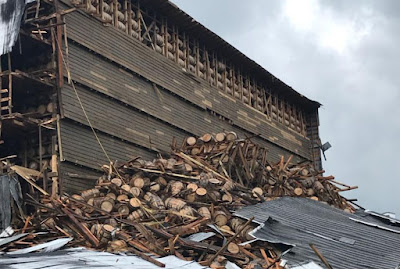The pruners whipped through them this chill morning.
In this ground, you can judge the depth of the soil by the size of the vine. And these littlies get a bit of drip from the dam!
To compare, this Grenache vine below is up the hill in the High Sands, which Bernard Smart planted in 1946. It has never been irrigated. Springtime. Budburst.
Here's Bernard and his son Wayne in their famous 1921 Grenache on the next ridge north.
This is about the highest Grenache gets above the sea on the Fleurieu. I made this photo just before ripening, looking south-east towards the Willunga Escarpment.
There's a breeze I get that comes from the Antarctic over those hills. It obviously finds no solice in chilling my brain to gelato, while it often smells of whale's breath.
If they marched toward the camera and over me and the hill, Wayne and Bernard might, after harvest, find viticulturer Michael Lane being attacked by an old Hickinbotham Grenache 200 metres away.
This one tried to bite him when he pruned it. It's a different place.
Between this hilltop and the one you see across the decline, in the middle, falls the dramatic Onkaparinga Gorge. That decline goes a long way down. In drought it's like a deep Flinders Ranges gorge, but when they let the weir go at Mount Bold, the entire gulch looks like a milkshake.
Onkaparinga is a Kaurna term that means 'women's river'.
Onkaparinga was a safe place for Onka [women] when rival groups invaded to get valuable ceremonial ochre from the coast, twelve kays to your left ... photos Philip White























































